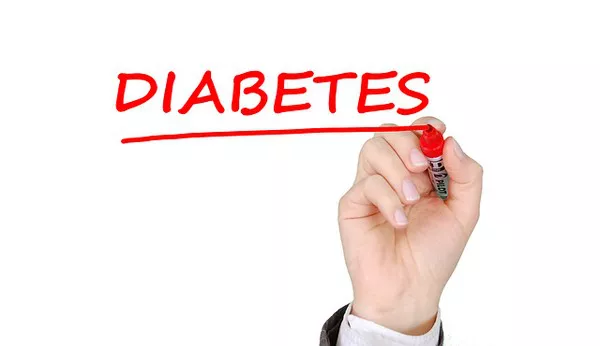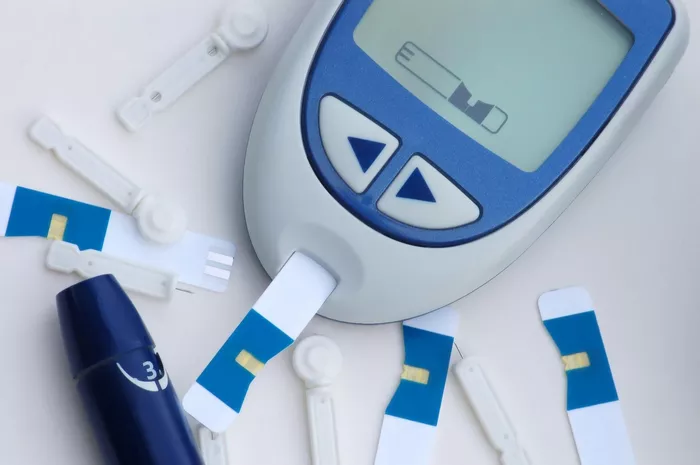Type 2 diabetes (T2D) is a chronic condition that affects millions of people worldwide. Advances in research and clinical practice have led to updated guidelines that aim to improve the management and outcomes for individuals living with this condition. This article provides a detailed overview of the latest guidelines for managing type 2 diabetes, including changes in diagnostic criteria, treatment strategies, and lifestyle recommendations.
Understanding Type 2 Diabetes
Type 2 diabetes is characterized by insulin resistance and a relative deficiency in insulin production. Unlike type 1 diabetes, which is an autoimmune condition, type 2 diabetes typically develops gradually and is often associated with lifestyle factors. The primary goals in managing T2D are to control blood glucose levels, prevent complications, and improve quality of life.
1. Diagnostic Criteria
Recent guidelines have refined the diagnostic criteria for type 2 diabetes to ensure early and accurate diagnosis. The main criteria include:
Fasting Plasma Glucose (FPG): A fasting glucose level of 126 mg/dL (7.0 mmol/L) or higher.
Oral Glucose Tolerance Test (OGTT): A 2-hour glucose level of 200 mg/dL (11.1 mmol/L) or higher after a 75-gram glucose load.
Hemoglobin A1c (HbA1c): An HbA1c level of 6.5% or higher.
Random Plasma Glucose Test: A glucose level of 200 mg/dL (11.1 mmol/L) or higher, with classic symptoms of hyperglycemia.
The updated guidelines emphasize the importance of confirming an initial diagnosis with a second test, particularly in cases where symptoms are not present.
Updated Guidelines for Blood Glucose Management
Managing blood glucose levels is a cornerstone of type 2 diabetes care. Recent guidelines provide updated recommendations for achieving and maintaining optimal glucose control:
1. Glycemic Targets
The latest guidelines advocate for individualized glycemic targets based on factors such as age, comorbidities, and risk of hypoglycemia:
General Target: An HbA1c level of less than 7% is recommended for most adults with type 2 diabetes.
Older Adults: For older adults, particularly those with multiple comorbidities or a limited life expectancy, a less stringent target of 7.5% to 8% may be appropriate.
Pregnant Women: Pregnant women with diabetes should aim for an HbA1c level of less than 6% to minimize risks to both mother and child.
2. Blood Glucose Monitoring
Regular monitoring of blood glucose levels is essential for effective diabetes management. The guidelines suggest:
Self-Monitoring: Frequent self-monitoring of blood glucose, particularly for those on insulin or other glucose-lowering medications.
Continuous Glucose Monitoring (CGM): CGM systems may be beneficial for individuals with frequent hypoglycemic episodes or those struggling to achieve glycemic targets.
Pharmacological Treatment Options
Recent updates in pharmacological management reflect advancements in diabetes research and the availability of new medications:
1. Metformin
Metformin remains the first-line treatment for type 2 diabetes due to its efficacy, safety profile, and potential benefits beyond glucose control, including cardiovascular benefits. The guidelines emphasize:
Initial Therapy: Metformin should be initiated at diagnosis unless contraindicated.
Dosage Adjustments: Dosage should be adjusted based on individual tolerance and kidney function.
2. Second-Line Medications
When metformin alone is insufficient for glycemic control, second-line medications may be added. Recent guidelines highlight several classes of medications:
SGLT2 Inhibitors: These drugs, such as empagliflozin and canagliflozin, help reduce glucose levels by promoting glucose excretion in the urine. They also have benefits for weight loss and cardiovascular health.
GLP-1 Receptor Agonists: Medications like liraglutide and semaglutide mimic the action of incretin hormones, enhancing insulin secretion and reducing appetite.
DPP-4 Inhibitors: These drugs, including sitagliptin and saxagliptin, work by increasing incretin levels, which helps regulate blood glucose levels.
Insulin: Insulin therapy may be necessary for individuals with severe insulin deficiency or those who do not achieve adequate control with oral medications.
3. Personalized Treatment Plans
The latest guidelines emphasize the importance of personalizing treatment plans based on individual patient characteristics, including:
Comorbidities: Consideration of other health conditions, such as hypertension or dyslipidemia.
Patient Preferences: Incorporating patient preferences and lifestyle factors into treatment decisions.
Risk of Hypoglycemia: Selecting medications that minimize the risk of hypoglycemia, particularly for individuals with a history of hypoglycemic episodes.
Lifestyle Management
Lifestyle interventions are crucial for managing type 2 diabetes. The updated guidelines reinforce several key strategies:
1. Diet
A balanced diet is fundamental in diabetes management. Recommendations include:
Carbohydrate Management: Focus on consuming complex carbohydrates with a low glycemic index. The total amount and type of carbohydrates should be tailored to individual needs.
Portion Control: Educating patients about portion sizes and reading food labels.
Nutrient-Dense Foods: Encouraging a diet rich in vegetables, fruits, lean proteins, and healthy fats.
2. Physical Activity
Regular physical activity helps improve insulin sensitivity and control blood glucose levels. The guidelines recommend:
Exercise Goals: Aim for at least 150 minutes of moderate-intensity aerobic exercise per week, along with muscle-strengthening activities on two or more days per week.
Activity Variety: Incorporate a mix of aerobic and resistance exercises for comprehensive benefits.
3. Weight Management
Achieving and maintaining a healthy weight is essential for managing type 2 diabetes:
Weight Loss: Even modest weight loss (5-10% of body weight) can lead to significant improvements in glucose control.
Behavioral Strategies: Support for behavior change, including counseling and weight loss programs, can be beneficial.
Cardiovascular Risk Management
Individuals with type 2 diabetes are at increased risk for cardiovascular disease. The latest guidelines include:
1. Blood Pressure Control
Target Blood Pressure: Aim for a blood pressure of less than 140/90 mmHg. In individuals with a history of cardiovascular disease or higher risk, more stringent targets may be appropriate.
Antihypertensive Medications: Use medications such as ACE inhibitors or angiotensin receptor blockers, particularly in patients with nephropathy or cardiovascular disease.
2. Lipid Management
Statin Therapy: Statins are recommended for most individuals with type 2 diabetes, especially those over the age of 40 or with additional cardiovascular risk factors.
Lipid Targets: Aim for an LDL cholesterol level of less than 100 mg/dL (2.6 mmol/L), or less than 70 mg/dL (1.8 mmol/L) for those with high cardiovascular risk.
Screening for Complications
Regular screening for diabetes-related complications is a crucial aspect of care. The guidelines recommend:
1. Retinopathy
Annual Eye Exams: Individuals with type 2 diabetes should have a comprehensive eye exam annually to detect diabetic retinopathy and other eye conditions.
2. Nephropathy
Kidney Function Monitoring: Regular monitoring of kidney function through urine albumin-to-creatinine ratio and serum creatinine levels.
Treatment for Nephropathy: Use of medications such as ACE inhibitors or ARBs in individuals with nephropathy.
3. Neuropathy
Foot Examinations: Routine foot examinations to identify neuropathy and prevent foot ulcers.
Patient Education: Educating patients on proper foot care and the importance of daily foot inspections.
Psychosocial Considerations
Managing type 2 diabetes involves addressing psychosocial factors that can impact disease management:
1. Mental Health
Screening for Depression and Anxiety: Regular screening for mental health conditions, as they can affect diabetes management and overall well-being.
Support Services: Providing access to counseling and support groups to help individuals cope with the emotional aspects of diabetes.
2. Diabetes Self-Management Education (DSME)
Education Programs: Participation in DSME programs to improve knowledge, skills, and self-management behaviors.
Ongoing Support: Regular follow-up and reinforcement of self-management strategies.
See also: What Vegetable Causes Type 2 Diabetes?
Conclusion
The updated guidelines for managing type 2 diabetes reflect the latest research and advancements in diabetes care. By adhering to these guidelines, healthcare providers can offer personalized, effective treatment strategies that address the multifaceted nature of type 2 diabetes. The focus on individualized care, comprehensive management of comorbidities, and lifestyle interventions aims to improve patient outcomes and enhance quality of life.
For individuals living with type 2 diabetes, working closely with healthcare providers and adhering to recommended guidelines can lead to better glycemic control, reduced risk of complications, and overall improved health. Regular follow-ups, ongoing education, and a proactive approach to diabetes management are essential for achieving long-term success.
For further assistance or personalized recommendations, individuals should consult their healthcare providers or a certified diabetes educator to develop a tailored management plan that meets their specific needs and health goals.
Related topics:
What is Type 2 Diabetes Remission?



























